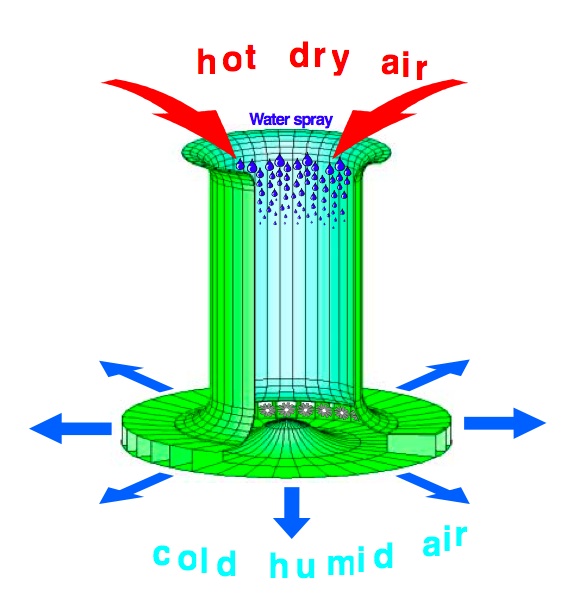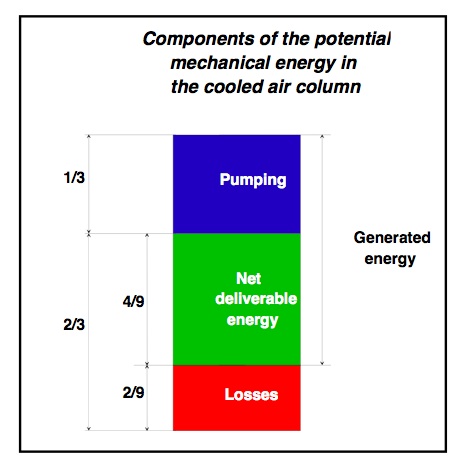
The working principle of the "Energy Tower" is based on the phenomenon of a downdraft by water spray, which has been studied extensively over the last three decades due to its effect on aviation. It is often referred to as “wind shear”. The “Energy Tower” technology is an attempt to contain the process inside a tall and large diameter hollow shaft with an open top and openings around the bottom (see figure 3.1). A continuous spray of water at the top partially evaporates and cools the air an estimated 10 to 14 degrees centigrade. The cooled air is denser. As an example, air cooled by 12 centigrade is approximately 4% heavier than the ambient air. The heavier air then falls down and exits through air shafts at the bottom. More dry and warm air is sucked in from the top and the process continues endlessly. It is exactly the opposite of an updraft of hot air in a regular chimney. The flowing air moves turbines housed in the air shafts at the bottom that generate electricity (Zaslavsky 2001).

Figure 3.1 Taken from Zaslavsky, Dan; Rami Guetta et al. (December 2001). "Energy Towers for Producing Electricity and Desalinated Water without a Collector". Technion Israel, Israel - India Steering Committee. Retrieved on 2008-04-24.
Many integral details of the design have not been released by the engineering team at Technion. The largest area of skepticism involves the concern that the energy needed to pump the water to the top of the tower would exceed any energy produced. According to Professor Zaslavsky's proposal, about a third of the power generated is used by the pumps that push water from a water source to the bottom of the tower and then to the top of the tower to be sprayed across the diameter of the shaft (2001) (see figure 3.2). However, estimated net deliverable energy for a 1200m by 400m tower is in the range of 370 MW.

Figure 3.2 Taken from Zaslavsky, Dan; Rami Guetta et al. (December 2001). "Energy Towers for Producing Electricity and Desalinated Water without a Collector". Technion Israel, Israel - India Steering Committee. Retrieved on 2008-04-24.
For an excellent synopsis of the project, please take the time to view the video below (broadband recommended).
Figure 3.3 Taken from Google Video, Courtesy of Technion Institute, Israel.